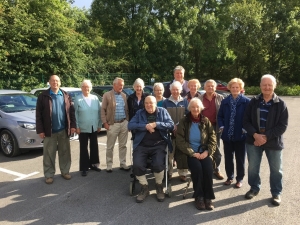Visit to Allerton Waste Recovery Park (AWRP) 12th September 2019
14 of us were treated to a fascinating glimpse into what happens to black bin rubbish collected from York and North Yorkshire homes. Being a Science teacher, it brought textbook pages to life.
We are all familiar with the 4R’s motto and the important message reinforced by our guide Kimberley was:
We need to REDUCE waste and be encouraging manufacturers to ban single use plastics
As much as possible we should aim to RECYCLE our garden and food waste as well as all metals and recyclable plastics, glass etc in our roadside bins. These go to specialised recycling centres.
Double checking what your kerbside recycling collects will help the reduction of contamination in the recycling process, if in doubt bin it than risk contaminating recycling loads.
We should also aim to REUSE plastic bags, clothing etc.
And finally RECOVER which is where Allerton comes into it and recovers all other non-recyclable waste for energy recovery.
AWRP is built near a landfill site which is no longer operational because black bin waste now comes to the plant; although it is still maintained, due to gases still being produced in the landfill from previous waste disposals.
We were impressed that all the waste is sorted as it comes in and all organic matter is taken to an anaerobic digester which produces BIOGAS (mostly methane) and this is then transferred into gas engines for electricity production. Clearly rubbish does smell but interestingly, the stale air is also pumped into the incinerator which lessens the smell but is also used as an airflow for the furnace to keep it at it’s high temperatures! During the sorting process any recyclable material such as Ferrous metals, non-ferrous metals and plastics are baled up and sent to recycling works in the UK.
The non- recyclable material including mattresses from tips, are burnt generating steam which generates electricity. The waste from the incinerator is scrubbed and conforms to stringent W.H.O standards and EA regulations. The plant is self- sustainable and produces electricity for 40,000 homes which is added to the National grid.

We would thoroughly recommend a visit, to book a visit for a group of up to 15 people visit:
https://wasteservices.amey.co.uk/where-we-work/north-yorkshire/community-and-education/
For any queries about the tour, email:
Joyce Harrison
Bickerton Resident & Science Teacher



